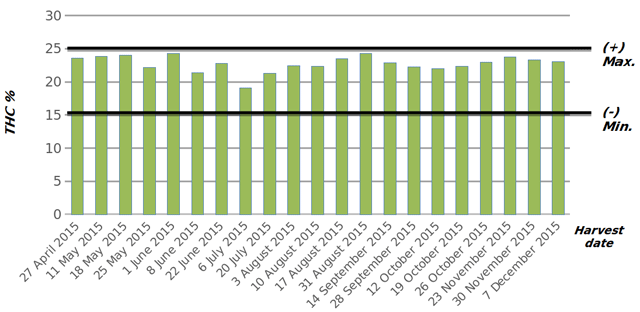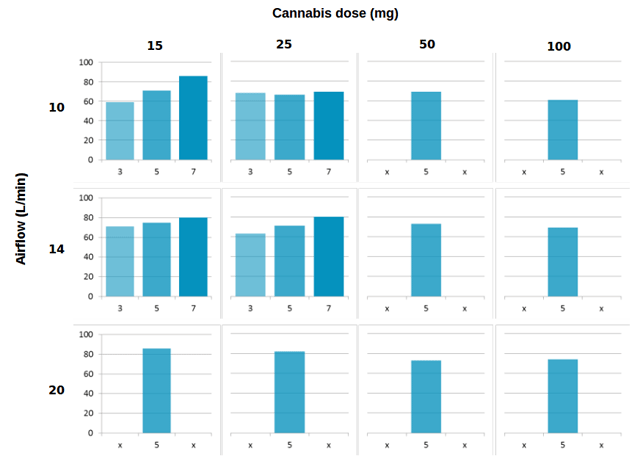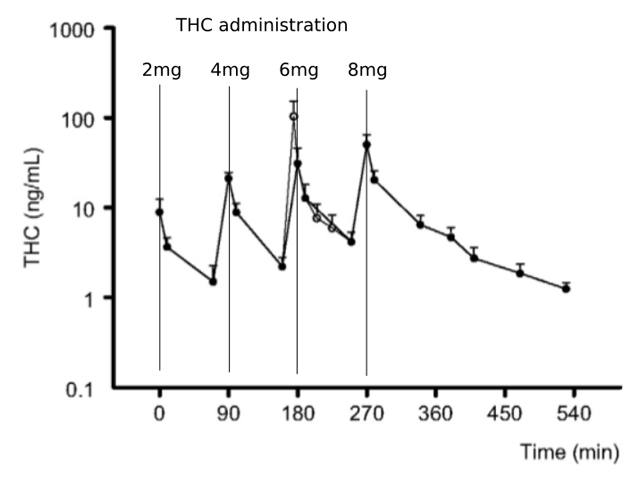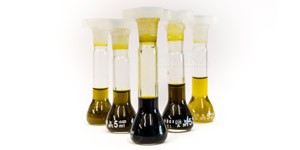By Jorge Fernández

Dedicated to investigation for over 5 years, in 2006 he started as a co-founder in the establishment of a Hi-tech firm in San Sebastian. In 2008, he founded Hermes Medical Engineering S.L., committed to the reseach and design of devices for the administration of active principles in vapor mediums. The first device, called MiniVAP, is sold all over the world for its therapeutic effects. At present, Hermes Medical S.L. is developing a medical vaporizer for Bedrocan BV, that will be used in clinical trials.
Whether for medical reasons, recreational or therapeutic use; controlling our usage of a substance is very important. In the first case, it permits the medical staff to set a posology (quantity administered, frequency of doses, and treatment time), to establish the efficacy and the relationship between the active principles and the recovery of a patient from an illness. With regard to its recreational or therapeutic use, monitoring the amount of substance helps us to become aware of our habits as consumers, above all in relation to tolerance, effect and craving. In this way we can become aware of some factors that condition our usage such as pain, stress, happiness, fear, and energy level, among others.
Medical grade or standardized cannabis
In the first place, the substance that is administered should comply with a series of quality standards, with regard to chemical composition, hygiene, and storage/packing conditions, before we are able to administer dosages with guarantees.
In the case of cannabis, the concentration of two of the principal cannabinoids, THC and CBD, should always be the same or should at least be set within known concentration range. We can obtain those concentrations with different laboratory methods (liquid (HPLC) and gas (GC) chromatography), which are then used to calculate the dosage.
For the sake of clarity, we shall describe a real case. The Dutch firm Bedrocan BV produces 5 varieties of medical grade cannabis to supply pharmacies in the Netherlands. One of its varieties, known as 'Bedrocan' is always produced with a concentration of 22% THC and less than 1% CBD. Only by knowing such concentrations of THC and setting the weight (for example in dosages of 50mg) can we determine the quantity of THC in the blood after each dose.

Picture 1. This graph shows the measure THC content (%) in twenty different batches of variety 'Bedrocan'.
The black lines indicate the allowed variation in content according to EU regulations for herbal drugs.
[An introducion to medicinal cannabis © 2013, Dr. Arno Hazekamp]
The route and method of administration
By route of administration, we mean the point through which the active principle enters the body to reach the blood stream and produce the desired effect. By method of administration, we consider the form in which the substance is prepared to facilitate absorption through the desired route. For cannabis, the main routes of administration are oral (ingested through the mouth), inhalation (inhaled through the lungs) or topical (through the skin). The methods range from the preparation of an infusion, a tincture, or baking in a cookie, smoking, preparation in an ointment and vaporizing.
Each case has its advantages and its inconveniences. By comparing the three methods, we can explain why vaporization represents one of the best ways of administration, both as a route (inhalation) and as a method (heating the plant under its combustion point).
- Oral route: the effect is slow and last longer than in the case of inhalation. If the form of extracting the active principles is by preparing an infusion or by cooking, the temperature of the water, the cooking time, as well as the time that it takes to cool, will all have a notable effect on the final concentrations of compounds such as THC and CBD.
- Topical route: its effect is local and will not reach the blood stream, so it doesn't affects the central nervous system. If the method of preparation is by means of a tincture, the concentration may be controlled if the process of preparation is always the same, and/or factors such as light or ambient temperature leave the active principles unaffected.
- Inhalation route: the vapor or smoke has a rapid passage into the blood. Overdosage or secundary effects are easier to manage because of the fast effects. If the method is by vaporization, the toxins derived from combustion are avoided and performance is improved (extracting more active principles, reaching vaporized values of THC up to a 90%, depending on the vaporizer).
Cannabis dosages with a vaporizer
By defining the concentration (of active components), the weight (of the cannabis used), the route of administration, and the method of administration, we facilitate the calculation of the quantity of active principle in the blood after taking the dose. However, there are various factors associated with the vaporizer that affect the quantity that is extracted. The principal factors are:
- Temperature: contributes the energy to induce the phase change in the plant; from its solid state to a vapor. This is one of the most important factors.
- Method of heating: is how the energy is transferred to evaporate the active ingredientes but depending on the type of heating, the performance of the extraction may change. In example, heat by conduction (the wall of the loading chamber transfers the heat) has more effect on the decarboxylation process of the plant while heat by convection (heated air circulates through the herb) helps to penetrate and extracts the cannabinoids in a more efficient way.
- Frequency, duration and number of inhalations: determine the time between inhalations, the duration of each inhalation and the total number of inhalations to complete an extraction of the dose. Prolonged duration of the inhalations notably increases the quantity that evaporates, but also increases irritation of the respiratory tract.
- Flow of inhalation: is the intensity or force with which we inhale (represented in volume per time unit, e.g. liters per second). The flow affects the amount of heat transferred inside the vaporizer, and the transport of the active principles into the vapor. In the same way as the duration of the inhalation, the intensity is related with comfort and irritation, principally due to the increase in the concentration of the vapor in the lungs. Coughing after an intense or a lengthy inhalation over time is frequent in inexperienced users of a vaporizer.
- Quantity of the sample: above all, this influences heat transfer to the plant. In general, the larger the amount of the sample, the lower the efficiency of the heat transfer process.

Picture 2. Correlation between DOSE of cannsbis (15-100mg), FORCE of inhalation (10-20 L/min) and DURATION of inhalation (3,5 and 7 seconds).
Values indicate percentage of the THC dose that is released from the plant material into the vapor.
Experimental settings: Cannabis variety Bedrocan (± 22% THC); MiniVAP glass core vaporizer, temperature 260°C
[University of Leiden, The Netherlands, 2015]
Standardization of the administration method
In the same way as the cannabis cultivation must be standardized to obtain the same concentration of the main active principles, it is necessary to standardize the method of administration or to describe an administration protocol that always meets the same standards.
For example, this is the case of the Sativex. In its prescription, the quantity of sprayings under the tongue are specified, as well as the frecuency and number of times the medicine can be used every day.
Another example with a vaporizer, where the extraction responds to user demand, the following parameters must be are optimized: temperature, number and duration of inhalations, frecuency and mimimum airflow.
Extracted vapor and concentration of active principles in the blood: pharmacokinetics
Having described the factors that affect the performance of a vaporizer, and knowing the concentration of active principles present in the plant material used; we can establish the concentration of cannabinoids in the blood by performing a clinical study. A study can be performed to obtain that information, with individuals who are administered a specific quantity of standardized cannabis under a specific administration protocol. They then have periodic blood tests to measure the quantity of cannabinoids and their evolution over time (for example, every 5, 15, or 30 minutes and subsequently at 2, 3 or 4 hours). This part is referred to as pharmacokinetics.

Picture 3. Mean (SD) observed profile of plasma THC over time.
[Effect of intrapulmonary tetrahydrocannabinol administration in humans,
Journal of Psychopharmacology, May 2008]
Conclusion
If values such as the concentration of active components, the quantity of the substance used, the method and frequency of administration are different in each dose, then the final concentration of the active principle in our body will be different. These variations will complicate conclusions, both for health personnel that prescribe as well as for patients, that may be drawn on the benefit or damage in our habits as consumers.
It is therefore important for a medical user to follow some standardized patterns, and for the recreational user to try to set some standards of quantity and frequency. In this way, it will be easier to become aware of the use that is given to the plant and to relate it with factors such as state of mind and health in general.


